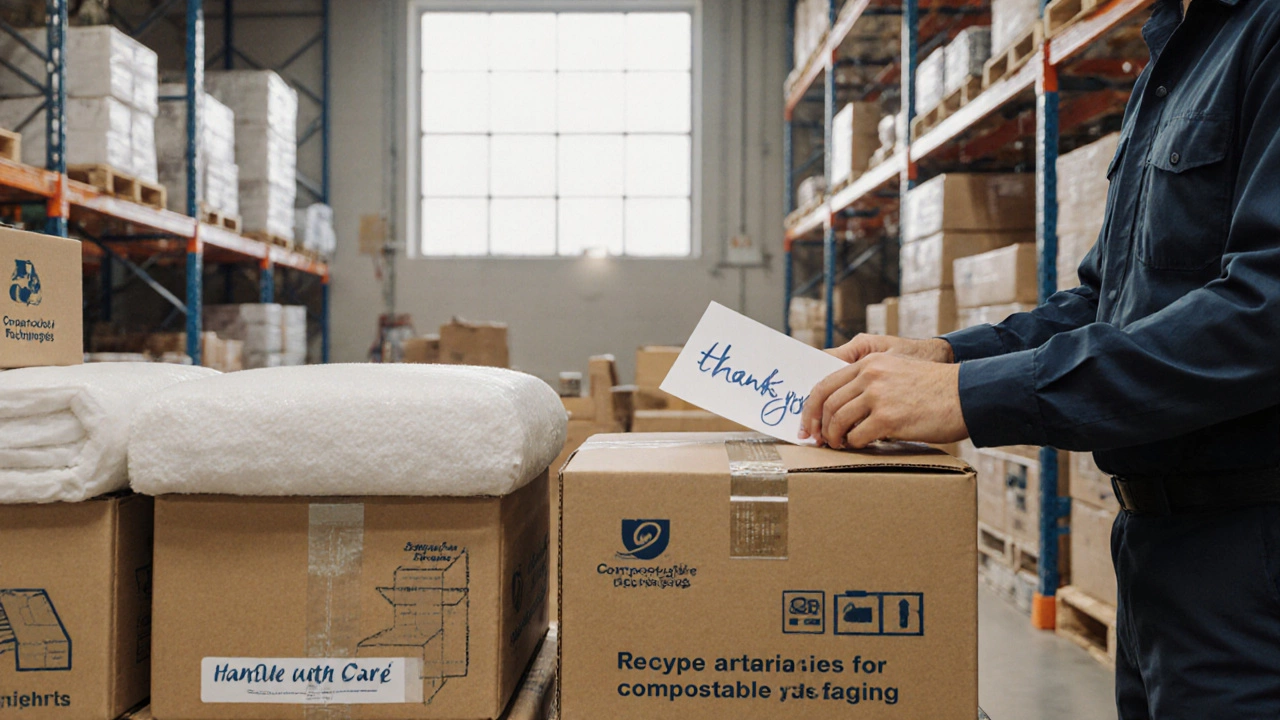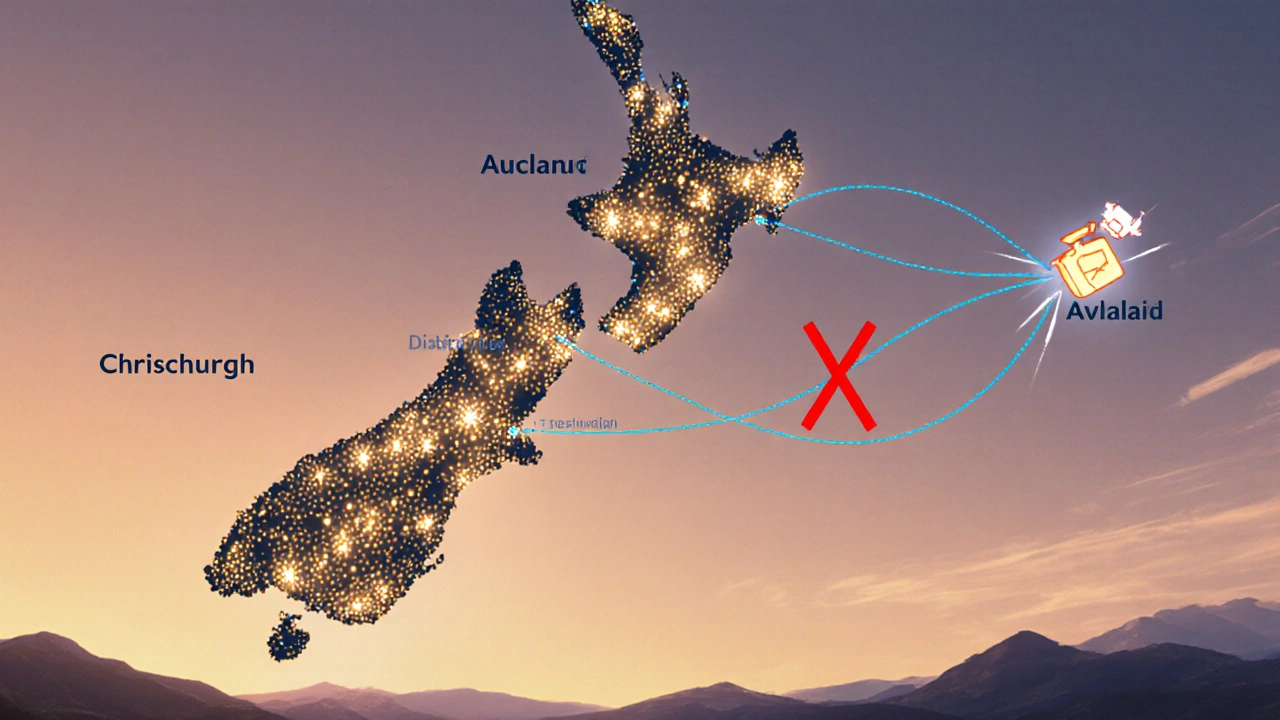What Are the 4 P's of Logistics? A Clear Guide for E-Commerce Sellers

Logistics Cost Calculator
If you run an online store, you know that getting a package from your warehouse to a customer’s door isn’t just about printing a label and hitting send. There’s a whole system behind it-and if you’re not thinking about the 4 P's of logistics, you’re leaving money on the table. These aren’t just theory-they’re the real-world levers that control your delivery speed, costs, customer satisfaction, and even your return rates.
What Exactly Are the 4 P's of Logistics?
The 4 P's of logistics-Product, Place, Price, and Promotion-are adapted from marketing’s classic framework but tuned for the physical movement of goods. In e-commerce, they’re not optional extras. They’re the foundation of every successful delivery operation.
Think of them like the four legs of a stool. Take one away, and everything wobbles. Get them right, and your customers forget they’re even dealing with logistics-they just get their stuff fast, cheap, and without hassle.
1. Product: It’s Not Just What You Sell, But How You Pack It
Most people assume "Product" in logistics means the item itself. That’s only half the story. In logistics, "Product" also means how it’s packaged, labeled, and prepared for movement.
Here’s what actually matters:
- Is your product fragile? Then you need cushioning, corner protectors, and clear "Handle with Care" labels.
- Are you shipping batteries or liquids? You’re now dealing with hazardous materials regulations-forget this, and your shipment gets held or fined.
- Does your product come in multiple sizes? If you’re using the same box for a phone and a blender, you’re wasting space and paying more in shipping.
One New Zealand-based seller of handmade candles switched from generic boxes to custom-sized, recyclable mailers. Their shipping costs dropped 22% in three months. Why? Less air space meant fewer oversized parcel fees from carriers like NZ Post and DHL.
Product in logistics isn’t just the item-it’s the entire physical experience of handling it from warehouse to doorstep.
2. Place: Where You Store and Ship From Changes Everything
"Place" isn’t just "where you ship to." It’s where you store your inventory. And this is where most e-commerce businesses blow it.
If you’re storing everything in one warehouse in Auckland and shipping to customers in Invercargill, you’re paying for long-haul freight, slower delivery times, and higher return rates. Customers expect delivery in 2-3 days. If you can’t meet that, you’re losing trust.
The smart move? Distributed fulfillment. That means keeping stock closer to your customers. You don’t need a big warehouse in every city. Even using a third-party logistics (3PL) hub in Wellington for South Island orders or one in Christchurch for the lower North Island cuts delivery times by 40-60%.
Amazon doesn’t ship from one central hub. Neither should you. Use data: see where your orders are coming from. If 30% of your sales are in Dunedin, store stock there. Simple.
Also, don’t ignore returns. Where you accept returns matters. If your return center is 500km away, customers won’t bother. Set up a local drop-off point with a courier partner-or offer prepaid return labels with local collection points.

3. Price: Shipping Costs Are Hidden Profit Killers
"Free shipping" sounds great on your homepage. But if you’re eating the cost, you’re bleeding money.
Here’s the truth: most e-commerce sellers don’t calculate their real shipping cost. They just pick a flat rate or offer "free" shipping without adding it to their product price.
Let’s say you sell a $45 phone case. Your product cost is $12. You spend $8 on packaging, $5 on marketing, and $6 on shipping. That’s $31 in costs. You make $14 profit. Now add a 10% return rate. Suddenly, your profit drops to $8 per unit.
Fix this with smart pricing:
- Bundle shipping into your product price. Call it "free shipping"-but make sure your price covers it.
- Offer tiered shipping: free over $75, $5 under $75. This increases average order value.
- Use real-time carrier rates. Don’t guess. Tools like Shippo or Easyship pull live rates from NZ Post, Aramex, and Toll. You charge exactly what it costs.
- For heavy items, charge dimensional weight. A big, light box costs just as much to ship as a small, heavy one.
One Wellington-based seller of outdoor gear started charging accurate dimensional weight fees. Their shipping losses dropped from $1,200/month to $180. They didn’t raise prices-they just stopped undercharging.
4. Promotion: Logistics Can Be a Competitive Advantage
Most people think promotion means ads, discounts, or social media posts. But in logistics, promotion means using your delivery experience to build loyalty.
Think about it: your customer doesn’t care about your brand when they’re waiting for a package. But when they get it fast, in perfect condition, with a handwritten note and a free sample? That’s when they become a repeat buyer.
Here’s how to promote your logistics:
- Send tracking updates that feel human-not robot text. "Your package is now at our Wellington hub. Expect delivery tomorrow between 9am-5pm."
- Include a small freebie: a sample of your next product, a discount code for next order, or a thank-you card.
- Make returns easy. A 14-day no-questions-asked return policy with prepaid labels isn’t a cost-it’s a trust builder.
- Highlight your delivery speed on your homepage: "95% of orders delivered in 2 days across New Zealand."
- Ask for reviews after delivery. A simple email: "How was your delivery experience?" gets you real feedback.
One small e-commerce brand in Tauranga started including a seed packet with every order. Customers posted photos online. Their Instagram followers grew 200% in six months-not because of ads, but because their unboxing experience stood out.
How the 4 P's Work Together
These four elements don’t work in isolation. They’re a system.
Example: You sell premium coffee beans. You use small, compostable bags (Product). You store stock in Auckland and Christchurch (Place). You charge $4.50 shipping but include it in your $35 price (Price). And you add a tasting note card with each order (Promotion).
Result? Customers feel like they’re getting a curated experience-not just a commodity. Your repeat rate jumps. Your returns drop. Your shipping costs stay low.
That’s the power of the 4 P's.

Common Mistakes to Avoid
- Using one-size-fits-all packaging for all products.
- Shipping from only one location, ignoring regional demand.
- Offering "free shipping" without adjusting prices or calculating real costs.
- Treating logistics as a cost center, not a customer experience tool.
- Not tracking delivery performance-like on-time rate or damage rate.
Track your metrics. Know your average delivery time. Know your return rate by region. Know your shipping cost per order. If you don’t measure it, you can’t fix it.
Real-World Example: A Small Kiwi Brand That Got It Right
Auckland-based brand, Coastal Essentials, sells sustainable beach gear. They used to ship everything from one warehouse. Delivery took 5-7 days to the South Island. Returns were high-customers got items that were crushed in transit.
They changed:
- Product: Switched to rigid, recyclable mailers with internal padding.
- Place: Partnered with a 3PL in Dunedin for South Island orders.
- Price: Bundled shipping into product price and offered free returns within 30 days.
- Promotion: Added a reusable cotton tote with every order and a QR code linking to a video on how to care for their gear.
Within 6 months, their delivery time dropped to 2-3 days nationwide. Returns fell by 40%. Customer reviews mentioned "fast shipping" and "great packaging"-words they never used before.
What’s Next? Start With One P
You don’t need to fix all four at once. Pick one.
- If your packaging is messy? Fix Product first.
- If you’re losing money on shipping? Fix Price.
- If customers in Otago complain about delays? Fix Place.
- If your reviews are flat? Fix Promotion.
Track the impact. Then move to the next. Small changes, done well, add up fast.
The 4 P's of logistics aren’t a textbook concept. They’re your secret weapon to outdeliver bigger brands. You don’t need a huge budget. You just need to think differently about how your stuff moves.
Are the 4 P's of logistics the same as the 4 P's of marketing?
They’re similar in structure but different in focus. Marketing’s 4 P's-Product, Price, Place, Promotion-are about how you sell and position your brand. Logistics’ 4 P's are about how you physically deliver the product. In logistics, "Product" means packaging and handling, "Place" means warehouse locations, "Price" means shipping cost structure, and "Promotion" means using delivery as a customer experience tool.
Can small e-commerce businesses use the 4 P's of logistics?
Absolutely. In fact, small businesses benefit the most. Big companies have teams and budgets. Small sellers can move faster. Fixing one P-like switching to better packaging or adding a local pickup point-can make a bigger difference than a full-scale overhaul. Start small, measure results, and scale what works.
Do I need logistics software to apply the 4 P's?
Not necessarily, but it helps. You can manage Product and Promotion manually. For Place and Price, software like Shippo, Easyship, or even Shopify’s built-in shipping tools saves time and reduces errors. They give you live carrier rates, automated labels, and tracking updates. If you’re shipping more than 20 orders a week, software pays for itself.
How do I know if my logistics is working?
Track three numbers: delivery time (average days from order to delivery), shipping cost per order, and return rate. If your delivery time is over 4 days in New Zealand, you’re behind. If your shipping cost is more than 15% of your average order value, you’re losing money. If your return rate is above 10%, something’s wrong with packaging or product description. Fix those, and your logistics is on track.
What’s the biggest mistake e-commerce sellers make with logistics?
Treating logistics as a cost to minimize, not an experience to optimize. Many sellers cut corners on packaging, use one warehouse, and offer "free shipping" without adjusting prices. That leads to delays, damaged goods, and unhappy customers. The best logistics isn’t the cheapest-it’s the most reliable and memorable.